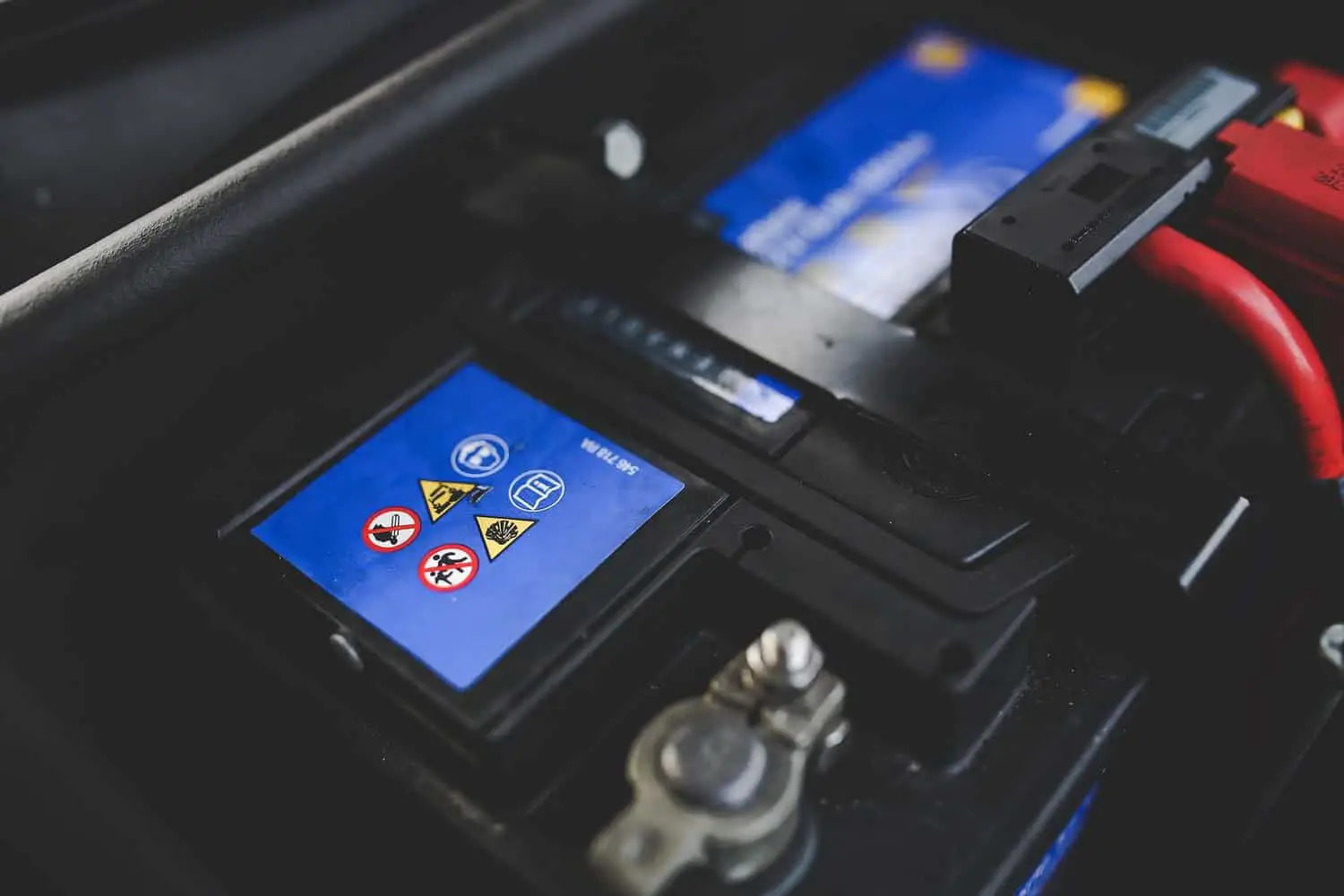The question of whether or not you need a battery for travel trailers is one that’s hotly debated within the camping community. Some people claim that a battery isn’t necessary, while others are convinced that you’d be skirting the law without one. Because there’s a lot of misinformation out there, we’ve decided to address this question directly.
Do I Need A Battery For My Travel Trailer?
The short answer is no. These days, most trailers are equipped with power converters that are capable of getting the job done on their own, with no battery required. That said, it’s always a good idea to make sure before you embark on that first adventure with your new travel trailer. This is especially true if you’ll be camping without access to a power outlet.
But what about the towing experience itself? Is it safe to tow the trailer if there’s no battery installed? The answer to this question is a definitive yes. Contrary to what some folks would have you believe, the towing vehicle will provide enough power to operate the brake and signal lights on the trailer as long as they’ve been properly attached.
So no, batteries aren’t a vital component of travel trailers. However, they will provide you with a backup power source in case your external hookup fails, which is enough to justify the purchase for most people. They also have a fairly long life when they’re used and stored properly (see How Long An RV Battery Will Last Before Replacements?, below), which helps to offset the cost.
How The 12-Volt System Works
The appliances on a travel trailer run off a 12-volt system. But what exactly does this mean?
The 12-volt DC battery system receives its charge from the 120-volt AC power. When the charge converts to DC power, it can be used to run the lights, heating system, water pump, and all of the onboard appliances.
This is why a battery is essential if the travel trailer doesn’t already come with a reliable power converter. If you’re parked at a campsite and using their power source, the battery will convert the current instead.
Best Battery For A Camper Trailer
If you’ve decided to buy a battery for your travel trailer, you should learn about the different types so that you can choose the one that will best suit your needs. While it can be difficult to differentiate between batteries based on appearance alone, the distinctions are important.
Deep-Cycle
This is the standard battery type for travel trailers. With a winning combination of efficiency and reliability, they’re also favored for boats, golf carts, and motorcycles.
Deep cycle batteries are of the lead acid variety, which means that they’re rechargeable, with a relatively high power-to-weight ratio. They’re capable of delivering continuous power over long periods of time and should run effectively until the battery is 80 percent discharged. Despite this reliable feature, we would recommend recharging when the discharge is at no more than 45 percent. This will help to prolong the overall life of the RV battery.
Flooded
The flooded version of this lead acid battery is inexpensive, but it requires users to keep a close eye on the electrolyte fluid levels and refill them s needed. The cheaper price also means that the metal is prone to corrosion. Flooded batteries will need to be cleaned and recharged fairly often—they can’t handle a discharge greater than 50 percent.
Sealed (AGM)
With a sealed deep-cycle battery (also known as an Absorbed Glass Mat or AGM battery), the electrolyte fluid is sealed inside, meaning that you won’t have to monitor the levels manually. This quality means that the battery can be placed in all sorts of different configurations without risk of spillage. Sealed batteries are also lighter and charge more quickly than their flooded counterparts, which helps to boost their appeal.
Gel
The gel battery is similar to the AGM version, except that it lacks the protective fiberglass coating around the electrolyte fluid. Instead, the electrolyte fluid is thicker and more viscous, like a gel. These require less maintenance than the flooded deep-cycle batteries, but they also charge slowly and are easily damaged.
Lithium-Ion
Travel trailers can also run on lithium-ion batteries that hold their charge effectively and recharge quickly when the power is dispersed. They have a high power capacity as well, making them a particularly attractive option for frequent boondockers. Unlike regular lithium batteries, the lithium-ion versions are rechargeable.
To learn more about the 12-volt system and travel trailer batteries in general, take a look at this informational video.
How Many Batteries Are Needed?
If you plan on doing a great deal of boondocking—that is, camping without access to a power source—then you’re better off investing in at least two 12-volt batteries. Some full-timers choose to carry three or four. While you could probably get by on a single RV battery, we would recommend at least two. That way, you’ll be able to gain more power by using one of the configurations outlined below.
Travel Trailer Batteries In Series
If you’re running two or more batteries, you have the option of creating a series connection between them. To do this, you’ll first need to connect the negative terminal on one battery to the positive terminal on another. Next, you’ll create another connection between the remaining positive and neutral connections. The series is complete when you’ve connected the conjoined batteries with whatever you’re trying to power–the travel trailer, in this case.
Should you choose to create batteries in series, the voltage will multiply while the amps remain the same. For example, if you’re running two 12-volt batteries together in series, you still have 12 volts, but the number of available volts will increase to 24. It’s important to keep all batteries in the series at the same rating—that is, each RV battery should have the same voltage and amps.
Travel Trailer Batteries in Parallel
Conversely, running batteries in parallel increases the amps while keeping the voltage the same. When you join two 12-volt batteries in parallel, you’ll still net 12 volts, but the current will be twice as strong.
To create a parallel connection, join the positive terminals of the two (or more) batteries that you wish to connect. Then connect this bank to the trailer to power the appliances. Running in parallel means that both of the batteries will drain in tandem–when it’s time to recharge one, you’ll need to recharge the other as well.
Travel Trailer Batteries In Both Series And Parallel
Looking to create a bank that has batteries in series and parallel? To pull this off, you’ll need at least four batteries. Simply connect two of the batteries in parallel and two of them in series, as outlined above. As you’ve probably guessed, this configuration will increase both the voltage and the current (or amps).
How Long Will RV Batteries Last Before Replacements?
Some people complain that batteries are a poor investment, as they require replacements every year. These individuals are probably not treating the batteries with the proper care (see Tips on Maximizing Battery Life, below. With the right maintenance and recharging schedule, you can expect your travel trailer’s battery to last at least 5-10 years.
Tips On Maximizing Battery Life
It’s true that travel trailer batteries are pricey, but you can maximize your investment by taking precautions to prolong its lifespan.
Perform routine inspections to make sure the water and electrolyte levels are sufficient. Recharging the batteries as soon as they’ve reached the maximum discharge level will help to boost their efficiency. As we’ve mentioned, it’s best to recharge them when discharge reaches 45 to 50 percent. Whatever you do, don’t let the discharge level dip below the 80 percent mark. This will cause small crystals to develop on the RV battery, which will ultimately lead to its destruction. Using distilled water will help you avoid this calamity as well.
Excessive heat can wreak havoc on your batteries as well, so keep this in mind when traveling to warmer climates. Another pitfall is overcharging–be sure to monitor them closely during the charging process so you can stop as soon as they’re at full charge.
Finally, you might consider purchasing a battery monitor. This will allow you to track overall usage, charge, and voltage, in addition to reminding you how long you have before it’s time to recharge. It’s an especially useful safety net for novices.
Charging Travel Trailer Batteries
The first phase of battery charging is called bulk charging. You’ll use this mode until it’s charged to 90 percent, then switch to absorption charging for the remaining 10 percent. This application is slower and helps to keep the water levels high and reduces the risk of gas buildup. At the very end of the process, you’ll switch to the float stage to bring the battery to full charge.
What To Do With Batteries When RV Is In Storage?
Just as excessive heat can deplete the battery’s overall shelf life, extreme cold can kill flooded cell batteries. For this reason, always remove any batteries from your travel trailer before storing it for the winter. Bear in mind that they’ll still be discharging slightly during the storage period. For this reason, you should check them every month or so to make sure their discharge levels haven’t fallen beneath 80 percent. If they have, recharge them as you normally would.
In Conclusion
In short, there’s much to consider when it comes to installing a battery for travel trailers. While we would recommend two 12-volt batteries for most average-sized campers, the decision is entirely up to you.
Good luck, and happy camping!
Check out our article on: 9 Easy Tips For Towing A Travel Trailer

